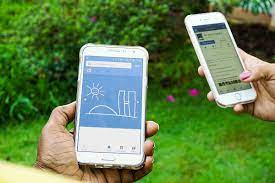The teaching method in schools has never been the same, it has evolved from the beginning, from textbooks and packages to which students were used to benefit from what their teachers instructed in the classroom itself.
With the advent of paper and pen, the cycle has improved, and today we have a new invention as our new learning strategy. Competence is familiar with the classroom to help illiterate students understand and benefit from what they have been instructed.
- Tech gains: From paper-pen style, education now on a screen
- With rising out-of-school children, Nigeria’s education pathway shaky
But these learning methods are fast evolving as ingenious technological advancements are being made. New inventions give educators the ability to continue developing and demonstrating learning strategies.
Adding new features to the homeroom is a powerful way to integrate learning styles with students. It gives students the opportunity to continue developing relationships with classmates and teachers and supports concerted efforts.
For Nigeria to tap into this and ensure more students move with the tech tide, there is a need for the compulsory use of computerized learning materials in the classroom because this can increase students’ commitment, assisting teachers further in developing their fitness projects and working with customized learning.
There are few tools that have made teaching and learning easier. They include the virtual homeroom recording, Archived Reality (AR), robots and other electronic devices; they make it all appear interesting and create a complete learning environment, enhancing a collaborative effort and allow teachers to gather information on the murder of their students.
Portable Personal Computer (PC) hardware and randomly programmed permission for learning now enable students to work independently in addition to regular classrooms by assisting them with meeting planning, monitoring and time management.
Although many schools are specialized and quickly welcomed by new, well-prepared teachers, good roads and good weather today, the use of new materials in the classroom is still low. This is due to the low use of new materials in teaching and the learning feelings of teachers.
As technology is incorporated into training, its application to teaching and learning remains a test. But the fact remains that the new power of advanced learning development cannot be overemphasized. As times change and the concept of school changes, younger students get the opportunity to discover new and powerful things that empower learning.
As laptops and other remote Internet of Things (IoT) gadgets become a necessity in the growing industry, it is a good idea for our schools to use a variety of materials in the homeroom.
Even as schools try to adopt these technologies for learning, there could be infrastructural challenges. For instance, schools may need to use cell phones, but their WiFi organisations may not be able to help with the design. In this case, it is a situation in which everyone undergraduate enrolled loses.
By not providing equally new equality for all students, with the aim of enabling us to strive for better literacy and numeracy, we are keeping a progressive gap in our society as a whole.
There are students who are passionate about discovering and sharing with the community, if they like it. Students need to work together to deal with challenges, they need to use new methods to accomplish this task and they also need to pass on to their partners what they have done. Instructors are training low-school students to experience childhood on the Internet, and many are learning how to test supercomputers the size of their hands in youth.
Aside from advice from clinical providers about when screen readers get to their homerooms, the reality of today’s training is that we have the ability to establish our global children who will find them as adults.
To make this work, here is a piece of advice: When teachers try to introduce teaching using new materials, they should use channels that work in the style of targeted learning where a new type is selected.
When innovation-based learning is explored, there should be a consistent assessment process and new areas of innovation. Show Sources
Teachers have seen an increase in repetition as students help lower-grade students to apply new materials to the homeroom.
Many mechanical activities involve different perspectives and this can create situations where academic students need help from friends or educators, or are selected in small circles where the best students are the best.
Yakub can be reached through [email protected]

